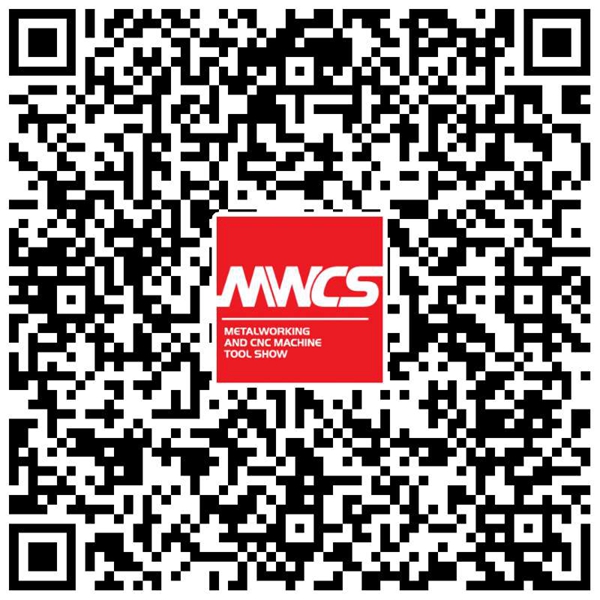
There’s an old saying in manufacturing: Automation is only as good as what you tell it to do. Richard Boyd has spent a career proving this statement wrong.
Boyd has worked with Hollywood studios and computer gaming companies; launched Virtual World Labs that concentrated on virtual reality, augmented reality, and artificial intelligence; and then sold that company to Lockheed-Martin, where he worked for a time before striking out on his own again.
A speaker at this year’s FABTECH® show in Chicago, Boyd is founder and CEO of Tanjo (rhymes with “bongo”), a Carrboro, N.C., company specializing in AI and machine learning. The name is Japanese and describes a secret weapon, a fighting stick that looks like a walking stick.
Boyd’s company has worked with businesses in various industries, including manufacturing, the military, logistics, accounting, and finance. Across all these sectors he addresses the same issue. “The key problem of this century is for everybody to figure out the right balance between humans and automation. What should we be doing with human attention and effort, and what should we be turning over to machines? And by the way, the answer to that question is changing almost every month. And therein lies the challenge.”
By “machines,” Boyd means more than just robots, cutting machines, material handling towers, and other forms of hard automation found on the FABTECH show floor. He’s referring to software and cloud-based systems too—anything that can take a massive amount of information, interpret it, decide the best course of action, and produce results.
Defining AI and Machine Learning
Boyd defines AI as the broader technology that makes machine learning possible. “I view AI as having a broader range of capabilities, and machine learning is a specific subset.”
With roots going back to the 1950s, AI isn’t new. “But there’s a difference now,” Boyd said. “For the old AI, between 1958 and 2009, humans had to understand something completely. Then they sat down and wrote logic into a computer to tell it what to do. You just couldn’t automate something you couldn’t understand.”
Today is different, as illustrated by the state of the art in autonomous vehicles. At first, developers acted in a closed environment, writing code based on how humans drive vehicles. “Well, it turned out that autonomous vehicles don’t behave the way humans do,” Boyd said. “So [developers] decided to give the problem to machine learning and give the system millions and millions of scenarios that a car might encounter while driving.”
Put another way, the solution isn’t based on a human’s understanding of how to drive but instead on techniques that reflect experiences from millions of scenarios all at once—something a human couldn’t fathom.
A New Scientific Method
Metal fabrication’s graying workforce looks back at their early days in the industry as a transitional period with templates, tape-reading controllers, early CNCs, and the introduction of CAD. It’s a bygone era.
“With machine learning, anything the system has access to, it can read in a microsecond, categorize it, and make sure it’s available to the people who need it.” This in turn can eliminate duplicate effort in product design and engineering, which can run rampant in large organizations.
“A machine learning system can map everything in an organization,” Boyd said. “Then the minute it detects that someone is trying to do something, it says, ‘Oh, here is something similar that we’ve done before. Let me pull that up for you, and let me connect you with the people and the content that would help you do it.’”
Boyd calls this the “enterprise brain,” and this concept extends to lean manufacturing concepts. As any lean guru will tell you, jobs spend most of their time between operations—in people’s inboxes in the front office, or as work-in-process on the shop floor. Considering this, imagine a fabrication shop with electronic trackers on every job traveler, tracking not only the manufacturing step but also exactly where that job physically resides and travels on the shop floor. What results is a spaghetti diagram that shows the part flow for hundreds, even thousands of different workpieces as they flow through the plant.
Taken a step further, imagine that this information is fed to AI, along with sales information, quoting activity, won bids, engineering, paint cure time, heat treatment times, outside processing requirements, and everything else. From this, the AI determines a schedule for optimal flow, with minimal work-in-process between steps. It splits jobs and releases orders in new ways that would be extremely complex and cost-prohibitive to do manually, like running part X of one job with part Z of another job, then splitting a job after forming and hardware insertion to separate assembly cells.
It might be completely nonintuitive; job X and Z might even call for different brake tools and require more changeover time. But sequencing the jobs like that in forming might snowball into much greater time savings many steps later in the job routing, and the AI can read and interpret that in an instant. Because AI can process an incredible amount of data within microseconds, this impossible schedule becomes a reality. And because AI never stops reading the data, the schedule changes in an instant.
Much of this is hypothetical, of course, illustrating AI’s potential, but some progressive shops are already implementing a kind of dynamic scheduling to some degree. For instance, Portland, Tenn.-based Food Warming Equipment Co., which hosted a tour during the Fabricators & Manufacturers Association International®’s Annual Meeting and FABRICATOR Leadership Summit earlier this year, has an in-house dynamic scheduling system that automatically refreshes every five minutes, based on demand and real-time data from the shop floor.
But as Boyd explained, this just scratches the surface of AI’s potential. AI could expand the concept further to include sales, accounting, materials purchasing, predictive maintenance systems, and supply chain management. Imagine a day when the moment oil starts to drip from a machine, or the temperature on a laser cutting optic rises more than expected, the problem is detected and communicated instantaneously not only to maintenance, but also production control, scheduling, purchasing and sourcing, and sales and estimating. Available capacity has just changed, and the entire organization reorients itself to that new reality.
Boyd related this example to work Tanjo has done in the logistics industry and with the U.S. Army, both of which essentially manage complex systems in motion. “For the Army, we have systems that can tell, say, who best to give a radio to for optimal support, based on their position and existing radar and telecommunication systems.”
You’re Automating What?
AI has implications well beyond manufacturing, of course, and in all the examples Boyd gave, there’s a common theme: Processes no one thought could be automated really can be, and the results not only lead to greater efficiency, but an entirely new way of doing business.
He described an AI project for automating the review of certain attributes of thousands of loan agreements. “When we first met with [bank managers], they said they were spending 320,000 hours a year just reviewing load agreements. And that’s 320,000 hours of New York lawyer time. That’s about $300 million a year, and it’s an understood part of their business, but it’s a cost. But we showed them that through machine learning, you can train the system to read all that stuff quickly, apply the analysis, and do it in a fraction of the time it would take a human. And it’s not just a one-time payoff. It pays off year after year after year.”
Boyd described an AI project with the U.S. Navy regarding its equipment procurement process. “Every time the Navy acquires a piece of equipment, they have this requirement to take the technical manual and convert it into training documents and ultimately training of some kind. It was once a long, arduous, human process. Now we’re getting to the point where a lot of it happens at a push of a button.”
Boyd added that AI doesn’t reduce human involvement completely, “but typically it’s a 10 times improvement. So now humans can put forth 10 percent of the effort and get it done 10 times faster.”
Data, Information, Intelligence
It’s been said for years that manufacturing, along with the world overall, is awash with data. “Everybody has big data,” Boyd explained. “But there’s a big leap from having data to having information, which is data that’s been organized and mapped for human consumption so someone can make decisions. Then it’s even a bigger leap from information to intelligence, which is information that has been computed in some way so that the human can actually act on it.”
The first step is to connect what Boyd calls the “lakes of data” from information systems, machinery, and elsewhere, adding that in many instances technology is available to do this automatically.
Once the data is made available and connected, the next step is for the AI to implement the “new” scientific method. “This allows the system to be fed a problem and then look at everything and come up with its own hypotheses about solutions, about things that might be improved upon based on patterns of activity it has seen.”
The manufacturing world has data, and AI thrives when that data is shared. In fact, some of the ideas behind AI are similar to the principles of the graphical internet’s early developers. “It was the dream of the internet that if everything were transparent to inquiry, you really would open up so much opportunity to allow people to be more efficient,” Boyd said. “If people hide things and put up walls, it makes things more difficult.”
In this sense, AI opens up a host of questions that relate to business strategy. What should a business keep secret for competitive advantage, and what should it share? Many companies are leaning toward sharing—think of Uber making some of its autonomous vehicle driving data public. Companies are doing this in part because they’re finding out just how well AI is working. By keeping things secret, companies might lose more than they gain, particularly as AI continues to proliferate.
“I’m thinking of the William Gibson quote, ‘The future is already here. It’s just unevenly distributed,’” Boyd said, adding that some companies and industries continue to push the limits of AI, while many others stay on the sidelines.
The Information Age
Over the decades, fabricators and other manufacturers have abided by the familiar adage: If it’s simple and repetitive, it’s easily automated. The more complex and less repetitive a process is, the more challenging automation becomes.
AI turns this argument on its head. It helps automate things like visual perception—easy for a human, tough for something that thinks in ones and zeros. Boyd described his work with Microsoft and teaching a Connect video game system to “recognize” a living room. This was done by feeding the system a massive number of examples, which spurred the machine learning into action.
A similar scenario could be imagined for vision systems, be it on welding robots or peering at a laser-cut nest of parts. Feed the AI tons of examples, and the automated process gets better over time.
Finally, AI could automate things that weren’t even conceivable for automation before. Think of a contract fabricator or large job shop with thousands of work orders, high demand variations, and continual scheduling changes. Now imagine an AI system able to absorb all that complexity and allow employees and managers to take the best course of action.
Thanks to the progress being made in AI, tasks that are extremely complicated are now ripe for some kind of automation. The more complex the problem, the greater the benefit.
From thefabricator
By Tim Heston









































